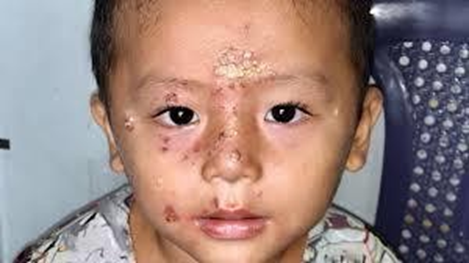A nurse is assessing a 4-month-old infant during a well-baby visit. For which of the following findings should the nurse notify the provider?
No head lag when pulled to a sitting position
Doll's eye reflex intact
Presence of tears when crying
Positive Babinski reflex
The Correct Answer is B
A. No head lag when pulled to a sitting position is a normal finding at 4 months of age and does not require notification of the provider.
B. The Doll's eye reflex (also known as oculocephalic reflex) should be absent by 4 months of age. Its persistence could indicate neurological abnormalities and warrants further evaluation by the provider.
C. Presence of tears when crying is a normal physiological response and does not require notification of the provider.
D. Positive Babinski reflex is normal in infants under 2 years old and typically disappears by 12 to 24 months of age. It does not require immediate notification of the provider.
Nursing Test Bank
Naxlex Comprehensive Predictor Exams
Related Questions
Correct Answer is C
Explanation
A. Amphotericin B is an antifungal medication and is not indicated for impetigo, which is a bacterial skin infection.
B. Lidocaine ointment is a local anesthetic and is not indicated for the treatment of impetigo.
C. Impetigo is highly contagious, and contact isolation precautions should be initiated to prevent its spread within the hospital setting.
D. Reporting the disease to the state health department may be necessary for surveillance purposes, but the immediate priority is to implement infection control measures.

Correct Answer is D
Explanation
A. The child's throat pain increasing is expected post-tonsillectomy and can be managed with pain medication. While important to address, it is not the priority in this situation.
B. The child refusing clear liquids may indicate discomfort or difficulty swallowing, but it is not as immediately concerning as other assessment findings.
C. The child crying often may be a response to pain or discomfort but does not indicate a physiological problem requiring immediate attention.
D. The child swallowing frequently is a priority finding because it could indicate bleeding, which is a significant complication after tonsillectomy and requires immediate intervention to prevent further complications or deterioration in the child's condition.
Whether you are a student looking to ace your exams or a practicing nurse seeking to enhance your expertise , our nursing education contents will empower you with the confidence and competence to make a difference in the lives of patients and become a respected leader in the healthcare field.
Visit Naxlex, invest in your future and unlock endless possibilities with our unparalleled nursing education contents today
Report Wrong Answer on the Current Question
Do you disagree with the answer? If yes, what is your expected answer? Explain.
Kindly be descriptive with the issue you are facing.
